#maritime empires
Explore tagged Tumblr posts
Text
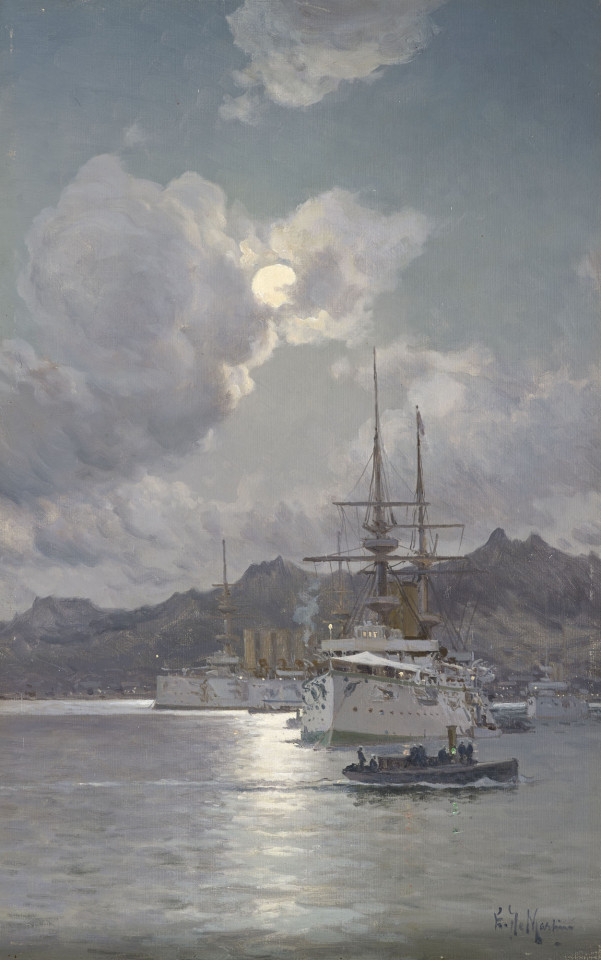
Warships at Anchor by Moonlight by Eduardo de Martino
#eduardo de martino#marine art#art#maritime#warships#moonlight#moonlit#full moon#mountains#british empire#bay#royal navy#great britain#england#age of steam#clouds#battleship#battleships#warship#anchor#moon#sea#sky
172 notes
·
View notes
Text


Royal Navy Issue Boarding Pistol from the British Empire dated between 1791 - 1795 on display at the Vancouver Maritime Museum in Canada
Explorers like Captain George Vancouver, who charted and claimed what is now British Columbia in Canada, were also officers in the Royal Navy. The ships and crews were armed and were ready and trained to use violence against Native peoples or rival empires.
Pistols with long barrels, like this one, were commonly used by seamen were as ones with shorter barrels were issued to officers officers. These pistols were cheaper than the ones produced for the army and were mainly use for close combat with a heavy handle which could be used as a bludgeoning weapon.
Photographs taken by myself 2023
#naval history#18th century#british empire#canada#canadian#georgian#hanoverian#age of sail#maritime museum#vancouver#barbucomedie
217 notes
·
View notes
Text
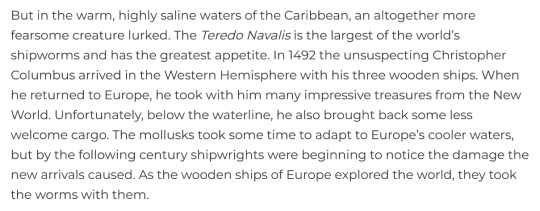
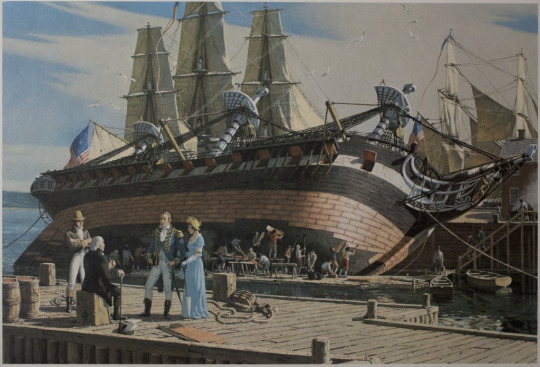
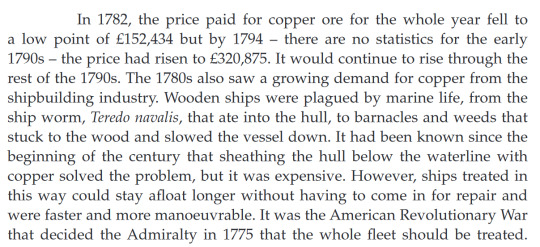





the British empire's war on a mollusc: [1] x [2] x [3] Anthony Burton, "Mines and Miners of Cornwall and Devon : The Tin and Copper Industries" [4] x [5] x [6] x [7] Burton
#history#maritime history#web weaving#<- maybe?#18th the century#I don't know how else to tag this#what this collection is missing is like a quote about empire and efficiency but I couldn't find one#enjoy
162 notes
·
View notes
Text
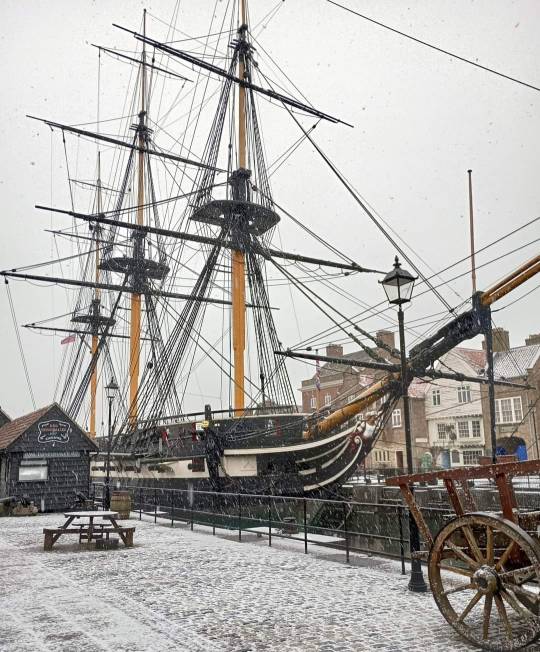
HMS Trincomalee, at the National Museum of the Royal Navy, Hartlepool.
A Leda-class frigate like HMS Shannon, she was built in Mumbai (Bombay) by master shipbuilder Jamsetjee Bomanjee Wadia, who lived c. 1754-1821 (Wikimedia Commons).

It was Wadia who ceremonially hammered a silver nail into Trincomalee's keel, following Parsi Zoroastrian tradition. I'm fascinated by the melding of global maritime traditions.
#hms trincomalee#age of sail#royal navy#naval history#jamsetjee bomanjee wadia#yeah i'm going to mention shannon every time i bring up a sister ship#maritime history#we rightly condemn imperialism but empire by its definition combines different cultures#i love the shipbuilder's portrait#the sea
53 notes
·
View notes
Text

Kala Diveyra, Malta, Frank Henry Algernon Mason, between 1914 and 1918
#art#art history#Frank Henry Algernon Mason#landscape#landscape painting#seascape#marine art#maritime art#maritime painting#Malta#Mediterranean#WWI#World War One#World War I#First World War#Royal Navy#war art#British Empire#British art#English art#20th century art#watercolor#Imperial War Museum
79 notes
·
View notes
Text



Louisbourg was the most expensive fortress in Canadian history.
#Louisbourg#Acadia#Cape Breton#Nova Scotia#Maritimes#King Louis XIV#French Empire#British Empire#New World#fortress#siege#Seven Years War#Canadian history#1740's
11 notes
·
View notes
Text
yoimiya 2nd story quest ?!?!?!?!
#honestly didn't vibe with the first one that much but lets goooooooo#as a tcg player im ok with the main gimmick being a tcg patch but it would be kinda boring if you're not into that lol but i do hope they ma#make a somewhat compelling story even if the premise of the patch sounds like total crack fic material#also very meh on fontaine 😭#i saw the key visual art for the livestream with like. charlotte. and my first thought was yanfei skin?????#and then i was disappointed. god the designs have not been hitting#i'm also delusional with fontaine bc before i knew it was gonna be france based i really thought the hydro nation would be either ancient ko#korea (to match with ancient china and japan) or maritime southeast asia#and seeing the underwater swimming clip just makes me want that more 😭😭😭😭😭😭#you could make a tropical like coral island or something similar for an underwater region if you used sea/pacific islands god#and maybe fishing would actually be useful in hydro regions bc greater importance to culture or something idk im just saying#like idk when has france been known for its sailing or maritime activities girl#besides like as a product of its empire. which genshin doesn't and won't reference lol#im neutral on steampunk but idk its just the way they've been designing fontaine characters (from the leaks) it isn't hitting idkkkkkkkkk#whatever. delusionally thinking about how genshin phili.ppines or like ancient indo.nesia would be like if they were land of hydro#ramblings!#genshin spoilers#livestream spoilers#liveblog insanity
6 notes
·
View notes
Text

East, W. Gordon (William Gordon). (1950). An historical geography of Europe. [4th ed.] New York: Dutton.
1 note
·
View note
Text

"HAMILTON MAN IN SEA ADVENTURE - Survivors of a ship which was torpedoed in mid-Atlantic in blinding snowstorm, these Royal Canadian Air Force officers were photographed as they arrived in Britain with the clothes they are wearing, and nothing else. The ship was sunk in the evening, and the men spent several hours in a lifeboat before a British corvette picked them up. Their clothes were soaked in salt water, but otherwise the group suffered no serious effects from the experience. The persons in this picture, all from Ontario, are: Rear row, Pilot Officer J. S. Dewar, Hepworth: Pilot Officer W. G. Rennie, 113 Burnsdale street, Lansing; Pilot Officer W. D. Hopkinson, 290 Wexford avenue south, Hamilton. Front row, Pilot Officer O. J. Cox, 607 Dufferin street, Toronto; Pilot Officer W. E. McLean, Waverly road, Toronto, and Pilot Officer Robert Essery, 844 Davenport road, Toronto. - R.CA.F. Photo," - from the Hamilton Spectator. May 21, 1943. Page 7.
#world war ii#battle of the atlantic#torpedoed#submarine warfare#maritime rescue#canada during world war 2#royal canadian air force#canada in the british empire
0 notes
Text
The Bone Shard War by Andrea Stewart - Book Review | A Fond Farewell
You can find the review for The Bone Shard Daughter here, and for the Bone Shard Emperor here. Andrea Stewart does not kid around. I always experience a bit of consternation when I come to the concluding novel in a trilogy. What if it’s a dud? What if these worlds and characters, whom I’ve grown to adore and care about over dozens of hours and several years, what if they’re done disservice by…

View On WordPress
#Andrea Stewart#book blog#book review#book reviewer#Fantasy#fiction#High Fantasy#literature#maritime fantasy#the bone shard war#The Drowning Empire#Writing
1 note
·
View note
Photo
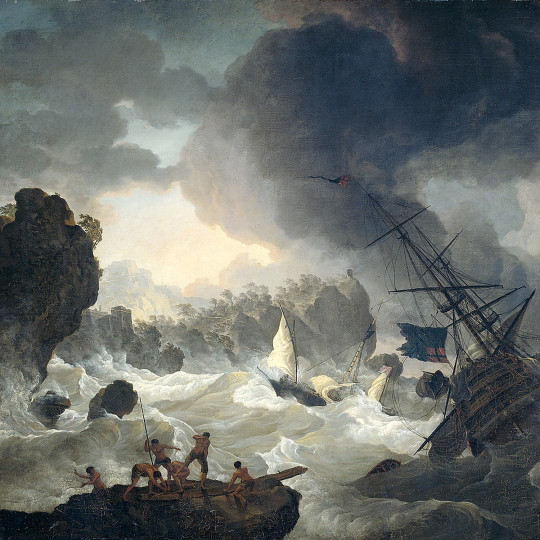
According to UNESCO, an estimated three million shipwrecks are scattered in the oceans’ deep canyons, trenches, and coral reefs and remain undiscovered. These shipwrecks preserve historical information and provide clues about how people lived in the past. The term ‘underwater cultural heritage’ refers to traces of human existence and activity found on ancient sunken ships or retrieved cargo such as bronze statues and priceless artworks. The Spanish treasure galleon, Nuestra Señora de Atocha, is the world’s most valuable shipwreck, estimated to be worth over USD 400 million. It was part of the Tierra Firme fleet of 28 ships bound for Spain from Cuba in 1622 and carried the Spanish Empire's wealth onboard – creamy pearls from Venezuela, glittering Colombian emeralds, and over 40 tons of gold and silver. The Atocha sailed into a hurricane off the coast of Key West, Florida, and sank. Its riches were discovered in 1985 by famed treasure hunter Mel Fisher (1922-1998). Thanks to virtual exhibitions and tours, you do not need diving skills to explore the oceans’ underwater cultural heritage. You can take a panoramic tour of Henry VIII of England’s (r. 1509-1547) favourite ship, the carrack Mary Rose, which sank in the English Channel during the Battle of the Solent on 19 July 1545. Want to see a 2,700-year-old Phoenician shipwreck submerged in the central Mediterranean? The virtual museum ‘Underwater Malta’ has a 3D model of the ship and app on Google Play. Fascinated to know what the wealth of the Spanish Empire looked like? Take a tour of Mel Fisher’s virtual treasures and the Atocha. There are countless virtual maritime museum displays, but let us take a look at five shipwrecks with interesting stories to tell.
123 notes
·
View notes
Text
Some facts about my birthday (October 29):
1390: First trials of witchcraft in Paris
1618: Walter Raleigh, colonialist statesman, soldier, and explorer, is tried for treason and executed
1682: The founder of Pennsylvania, William Penn, lands at what is now Chester, PA
1740: James Boswell, diarist and biographer, is born
1863: The International Red Cross is formed in Geneva
1882: Jean Giradoux, playwright and novelist, is born
1888: The Convention of Constantinople allows for free maritime passage through the Suez Canal; Li Dazhao, co-founder of the CCP and mentor of Mao, is born
1889: N.G. Chernyshevksy, author of "What is to be done?", dies
1897: Joseph Goebbels, the nazi, is born
1901: Leon Czogolsz, anarchist, is executed for the assassination of William McKinley
1910: A.J. Ayer, logical positivist, is born
1914: The Ottomans enter WWI
1923: The Ottoman Empire dissolves; Turkey becomes a republic through the efforts of Atatürk
1924: Zbigniew Herbert, poet, is born
1929: Black Tuesday, the crash of the New York Stock Exchange and the beginning of the Great Depression
1938: Ellen Johnson Sirleaf, president of Rhodesia, is born; Ralph Bakshi, animator, is born
1940: The US begins its first peacetime military draft
1948: Franz de Waal, ethologist, is born
1949: George Gurdjieff, philosopher and mystic, dies
1956: The Suez Crisis begins
1962: The Beach Boys release "Surfin' Safari"
1967: Musical "Hair" opens off Broadway
1969: The first computer-computer link established on ARPANET
1971: Ma Huateng, co-founder of Tencent, is born; Winona Ryder, actor, is born
1975: Franco's 36-year long leadership of Spain ends
1985: Evgeny Lifshitz, physicist, dies
1991: The spacecraft Galileo makes the first ever visit to an asteroid
1995: Terry Southern, screenwriter of Dr. Strangelove, dies
2004: Al-Jazeera broadcasts Osama Bin Laden taking responsibility for 9/11; European Union leaders sign the first EU constitution
It is the Christian feast day of:
Abraham of Rostov
Blessed Chiara Badano
Colman mac Duagh
The Duai Martyrs
Gaetano Erico
Michele Rua
Narcissus of Jerusalem
Theuderius
It is a public holiday in:
Cambodia (Coronation Day)
Turkey (Republic Day)
It is a private holiday in:
USA (National Cat Day)
Everywhere (my birthday)
90 notes
·
View notes
Text

Royal Navy Issue Cutless from the British Empire dated between 1791 - 1795 on display at the Vancouver Maritime Museum in Canada
Explorers like Captain George Vancouver, who charted and claimed what is now British Columbia in Canada, were also officers in the Royal Navy. The ships and crews were armed and were ready and trained to use violence against Native peoples or rival empires.
Cutlesses like this were issued to seaman for boarding and defensive actions and out of combat were stored on the ship. When needed they were often distributed to the seamen in a barrel on deck for easy access. Regulation cutlesses were produced by a number of manufacturers so they were not all the exact same pattern.
Photographs taken by myself 2023
#sword#naval history#british empire#canada#canadian#18th century#georgian#hanoverian#art#age of sail#maritime museum#vancouver#barbucomedie
5 notes
·
View notes
Text

17th-Century Pirate 'Corsair' Shipwreck Discovered off Morocco
Wreck-hunters have discovered the remains of a small 17th-century pirate ship, known as a Barbary corsair, in deep water between Spain and Morocco.
The wreck is "the first Algiers corsair found in the Barbary heartland," maritime archaeologist Sean Kingsley, the editor-in-chief of Wreckwatch magazine and a researcher on the find, told Live Science.
The vessel was heavily armed and may have been heading to the Spanish coast to capture and enslave people when it sank, its discoverers said.
But it was carrying a cargo of pots and pans made in the North African city of Algiers, probably so that it could masquerade as a trading vessel.
Florida-based company Odyssey Marine Exploration (OME) located the shipwreck in 2005 during a search for the remains of the 80-gun English warship HMS Sussex, which was lost in the area in 1694.
"As so often happens in searching for a specific shipwreck we found a lot of sites never seen before," Greg Stemm, the founder of OME and the expedition leader, saide in an email.
The 2005 expedition also found the wrecks of ancient Roman and Phoenician ships in the area, Stemm said.
News of the corsair wreck is only being released now, in a new article by Stemm in Wreckwatch, after extensive historical research.
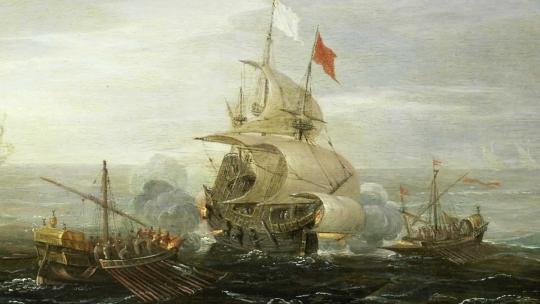
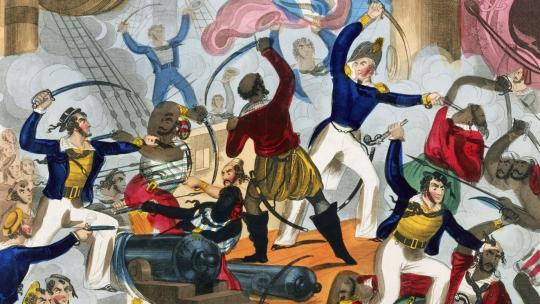



Dread pirates
The Barbary corsair pirates were predominantly Muslims who began operating in the 15th century out of Algiers, which was then part of the Ottoman empire.
Much of the western coastline of North Africa, from modern-day Morocco to Libya, was known as the "Barbary Coast" at the time — a name derived from the Berber people who lived there; and its pirates were a major threat for more than 200 years, preying on ships and conducting slave raids along the Mediterranean and Atlantic coasts of Europe.
The people captured in the slave raids were held for ransom or sold into the North African slave trade that operated in some Muslim countries until the early 20th century.
But the piratical activities of the Barbary corsairs came to an end in the early 19th century, when the pirates were defeated in the Barbary Wars by the United States, Sweden and the Norman Kingdom of Sicily in southern Italy.
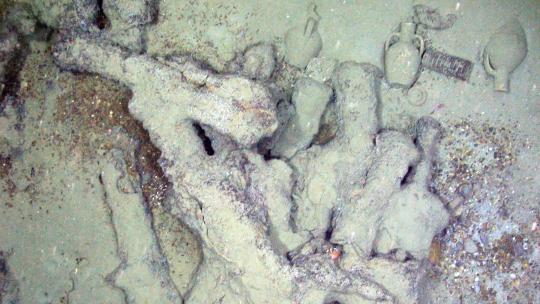
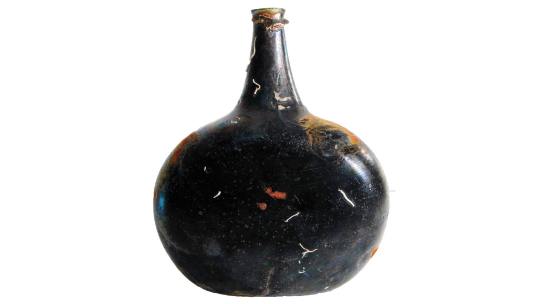
Sunken ship
The corsair wreck lies on the seafloor in the Strait of Gibraltar, at a depth of about 2,700 feet (830 meters).
The ship was about 45 feet (14 m) long, and research indicates it was a tartane — a small ship with triangular lateen sails on two masts that could also be propelled by oars.
Tartanes were used by Barbary pirates in the 17th and 18th centuries, in part because they were often mistaken for fishing vessels, meaning other ships wouldn't suspect pirates were onboard, Kingsley said.
"I've seen tartanes described as 'low-level pirate ships,' which I like,” Kingsley said.
The wreck hunters explored the sunken corsair using a remotely operated vehicle (ROV), which revealed the vessel was armed with four large cannons, 10 swivel guns and many muskets for its crew of about 20 pirates.
"The wreck neatly fits the profile of a Barbary corsair in location and character," Kingsley said. "The seas around the Straits of Gibraltar were the pirates' favorite hunting grounds, where a third of all corsair prizes were taken."
Stemm added that the wrecked ship was also equipped with a very rare "spyglass" — an early type of telescope that was revolutionary at the time and had probably been captured from a European ship.
Other artifacts of the wreck support the notion this was a pirate ship laden with stolen goods.
"Throw into the sunken mix a collection of glass liquor bottles made in Belgium or Germany, and tea bowls made in Ottoman Turkey, and the wreck looks highly suspicious," he said. "This was no normal North African coastal trader."
By Tom Metcalfe.
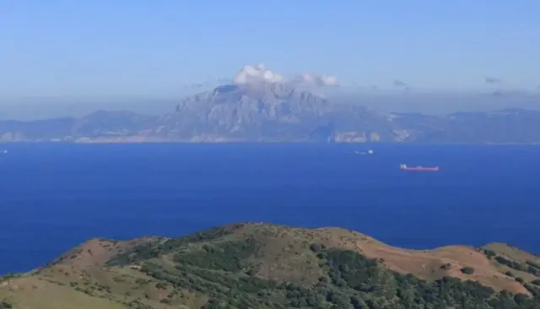
#17th-Century Pirate 'Corsair' Shipwreck Discovered off Morocco#Barbary corsair#pirate ship#shipwreck#Strait of Gibraltar#ancient artifacts#archeology#archeolgst#history#history news
134 notes
·
View notes
Text


23 October 2024.
Israel is bombing one of the world’s oldest cities, Tyre, Lebanon. It’s threatening to destroy cultural artifacts, much like it’s done in Gaza.
Tyre is Lebanon’s fifth-largest city and a UNESCO World Heritage Site.
Most of the city’s 200,000 residents have been forcibly evacuated, with only an estimated 15,000 remaining.
Tyre is more than 4,000 years old. The ancient city has been a maritime and trade hub under many empires, but now its cultural heritage and monuments are at risk.
Israel is a disease. Spreading its infection across the world unbarred.
(sources: x, x)
#hands off lebanon#lebanon#all eyes on jabalia#save north gaza#free palestine#gaza genocide#free gaza#palestine genocide#palestine#gaza strip#israel#gaza#am yisrael chai
77 notes
·
View notes
Note
top ten non-fiction (general) books and top ten history books?
Naturally, whenever I volunteer to talk about books, I completely forget everything I have ever read, but we'll try to overcome this. Since it is impossible for me to pick them from all-time, I'll do this list from what I have recently read and enjoyed, including both nonfiction and history specifically since most of these fit that bill somehow:
Society of the Snow by Pablo Vierci. Just finished this last night, and it's the source material for the Netflix film of the same name, of the 1972 plane crash of an Uruguayan rugby team in the Andes and their incredible survival odyssey. If you've seen the film, you know how harrowing and also incredibly moving it is.
Pretty much anything by David Grann, including The Wager, Killers of the Flower Moon, Lost City of Z, etc. The Wager is his newest one, though people may have heard of Killers of the Flower Moon, but they're all good. He's up there with Erik Larson as one of my favorite writers of utterly gripping and novelistic nonfiction.
Speaking of Erik Larson: pretty much anything by, including Dead Wake, The Splendid and the Vile, In the Garden of Beasts, etc. Most people will have heard of and/or read Devil in the White City, but his other stuff is equally good. His newest, The Demon of Unrest, is a bit slower than some of the others IMHO, but it's also about the beginning of the Civil War and the crisis at Fort Sumter and is important reading in our current perilous moment.
Challenger: A True Story of Heroism and Disaster on the Edge of Space by Adam Higginbotham. A forensic and incredibly detailed history of the Challenger space shuttle disaster in 1986.
A Travel Guide to the Middle Ages, by Anthony Bale. This is an entertaining and readable introduction to mobility in the Middle Ages: who traveled, where they went, what they thought, and how they reacted and wrote about the other cultures they encountered, from both east and west. Definitely a good entry point for the layman who has heard the "medieval people never traveled/went anywhere" stereotype and knows it's wrong, but wants to know more HOW.
Into the Silence: Mallory, the Great War, and the Conquest of Everest by Wade Davis. Another incredibly detailed doorstopper history book that reads like a novel, exploring 19th-century British imperialism in Asia, the race to climb Mount Everest, the Great War, and more.
Emperor of Rome and SPQR by Mary Beard. These are both incredibly accessible starting points for studying Rome, written by a renowned classicist with a knack for making her historical material and concepts easy to understand and entertaining. Don't be put off by the length of either of these, as they read easily.
The Wide Wide Sea and The Kingdom of Ice by Hampton Sides. The former is his newest book, about the last voyage of Captain Cook, and the latter is my favorite of his other books, about the 19th-century USS Jeannette polar expedition. He is a writer of incredible skill, thoughtfulness, and detail in handling subjects of empire, exploration, colonialism, maritime history, and adventure.
Empire of Pain: The Secret History of the Sackler Dynasty, by Patrick Raddon O'Keefe. A compelling, disturbing, mesmerizing, and infuriating account of the Sackler family, the creation of OxyContin, and the opioid epidemic in America.
Master Slave Husband Wife, by Ilyon Woo. Now, this one is a bit cheating since I haven't actually read it yet (it's on hold at the library), but it's won the Pulitzer Prize for history so I'm fairly sure it's going to be good. It's about 19th century slaves-turned-abolitionists William and Ellen Craft and their race- and gender-bending journey to freedom and anti-slavery activism.
99 notes
·
View notes